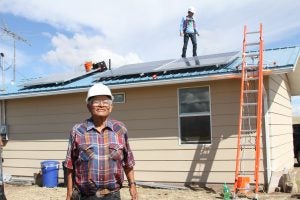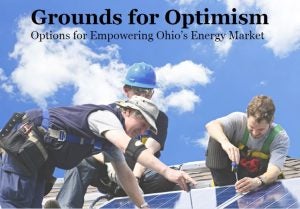 Just over a year ago, California’s SB 350 became law and was rightly celebrated for its boldness and impact, increasing the state’s renewable energy mix to 50 percent and doubling energy efficiency buildings. Today, a less heralded provision of SB 350 – charging the California Energy Commission with studying barriers to clean energy – pushes us toward exceeding our renewables and efficiency aspirations. Moreover, it recognizes that in order for the state to realize its climate and energy future, planning must include and reflect the needs of all Californians.
Just over a year ago, California’s SB 350 became law and was rightly celebrated for its boldness and impact, increasing the state’s renewable energy mix to 50 percent and doubling energy efficiency buildings. Today, a less heralded provision of SB 350 – charging the California Energy Commission with studying barriers to clean energy – pushes us toward exceeding our renewables and efficiency aspirations. Moreover, it recognizes that in order for the state to realize its climate and energy future, planning must include and reflect the needs of all Californians.
Through the SB 350 Barriers Study, the commission has engaged consumers, businesses, local leaders, environmental groups, and others to identify strategies that can unlock clean energy investments and spur growth in low-income and disadvantaged communities across the state.
The final version of the study and recommendations are scheduled for release later this month, just in time for lawmakers to noodle on the robust and far-ranging ideas before the 2017 legislative session. In addition, the commission – in conjunction with the California Air Resources Board – will issue a companion report about barriers to clean transportation. The study and its companion report are the kinds of tools that are critical for California to reach its clean energy goals. Read More










 The New York City Council has an excellent environmental track record, and I’m pleased to say that most recently it has passed a group of bills tackling energy efficiency in buildings, adding to its stellar standing.
The New York City Council has an excellent environmental track record, and I’m pleased to say that most recently it has passed a group of bills tackling energy efficiency in buildings, adding to its stellar standing. Yesterday, the Southern California Gas Company filed for permission to resume operations through approved wells at its Aliso Canyon gas storage facility, saying it has completed key safety tests. The facility has been offline over the last year, after it sprung one of the largest gas leaks ever recorded.
Yesterday, the Southern California Gas Company filed for permission to resume operations through approved wells at its Aliso Canyon gas storage facility, saying it has completed key safety tests. The facility has been offline over the last year, after it sprung one of the largest gas leaks ever recorded. The Greenlining Institute partners with Environmental Defense Fund (EDF) and is a policy, research, organizing, and leadership institute working for racial and economic justice. They recently released a report highlighting how inclusive policy can make electric vehicles accessible to all. Here at EDF, we know clean energy policies cannot be truly transformative without accessibility across all income levels and among all communities. Indeed, that is the only way we will accomplish our goal of curbing harmful climate change.
The Greenlining Institute partners with Environmental Defense Fund (EDF) and is a policy, research, organizing, and leadership institute working for racial and economic justice. They recently released a report highlighting how inclusive policy can make electric vehicles accessible to all. Here at EDF, we know clean energy policies cannot be truly transformative without accessibility across all income levels and among all communities. Indeed, that is the only way we will accomplish our goal of curbing harmful climate change. 